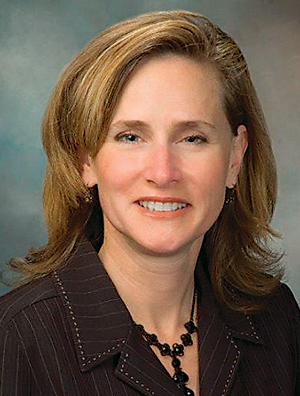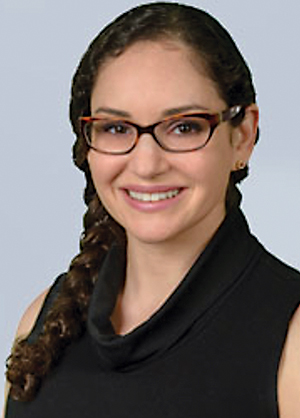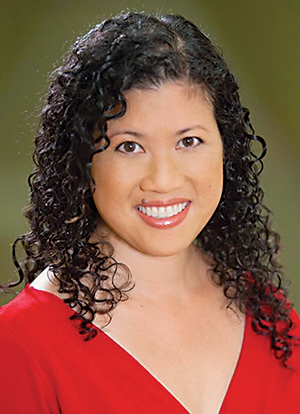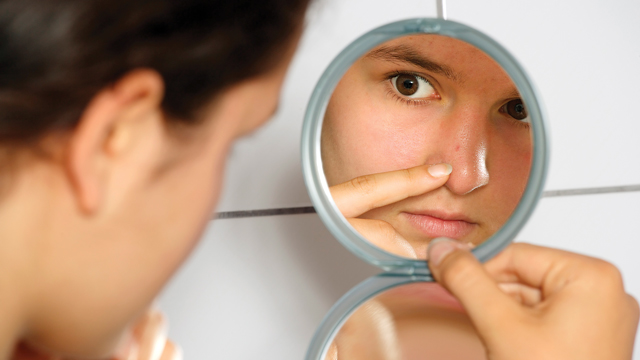Mirror, mirror on the wall. Who’s the zittiest of them all?
Sad to say, but nearly every teenager meets a moment when the answer to that question seems painfully clear: It’s me.
But even if the scourge of teenage acne might be the stuff of despair for kids the world over, both the causes and treatment of pimples, blackheads, and stubborn facial welts are now better understood than ever by medical professionals.
The first thing a dermatologist will likely tell an anxious teen who’s concerned with that discouraging face-to-face reflection? Don’t worry.
It’s not your fault!
Myths and misconceptions surrounding facial acne have long dogged both self-conscious children and frustrated parents. But lucky for today’s teens, modern medicine has zeroed in on the root causes of acne, which is the most common skin condition in the United States. Though acne can occur at any age, teenagers are the condition’s most common victims – and for reasons particular to the habits and whims of Mother Nature.
Blame the Pores
The pimples, bumps, and facial reddening that define acne are primarily the result of clogged pores. These clogs occur when dead skin cells, which normally rise to the surface of our pores and regularly escape from our skin’s outer layer, get stuck inside the pores because our bodies are manufacturing too much sebum, the natural, ever-present oil that prevents our skin from drying out.
On top of that, bacteria that lives on our skin – known as p. acnes – also tends to get inside those engorged pores and follicles where it can begin to multiply quickly, bring on infection, and inflame pores to the point where they become red and swollen.
But why are teenagers so susceptible to acne? And why do their faces in particular seem to take such a beating?
Blame puberty – and the raging hormones that define that stage of a child’s life.
Though acne’s exact causes are still being explored – and vary from person to person – hormones known as androgens increase in both boys and girls during puberty. These androgens cause the skin’s oil glands to enlarge and produce more sebum.
“Kids have that hormone surge with puberty, so they’ve got more disruption and more oil production,” says Maggie Constante, DNP, a dermatological nurse practitioner with Commonwealth Dermatology. “And the face just has more oil glands – as well as the back and chest.”
Don’t Fall for Three Common Myths
When a teenager’s face erupts unexpectedly, it’s easy to jump to conclusions about just why that once-creamy complexion went from good to bad to even worse in only a matter of weeks or months.
But remember the fundamental acne rule of thumb: Just like Mount Vesuvius, the seismic event occurring on that teen visage is boiling and bubbling from the inside out, not the outside in.
For starters, let’s put the most persistent acne myth to rest: Teenage acne does not come from having a dirty face.

“Parents will think their kids are getting acne because they’re not washing their face enough or not cleaning their face enough,” says Georgia K. Seely, MD, a dermatologist with Dermatology Associates of Virginia. “But it really is just puberty and hormones. They could scrub their face ten times a day, and they’d still have acne.”
In fact, excessively washing or irritating the face can cause acne to worsen by disrupting the skin and spreading bacteria. To help the face stay as healthy as possible when acne occurs, wash it gently twice a day with a mild, fragrance- and alcohol-free cleanser, and rinse using warm (not hot) water. Remember to use fresh towels to dry, and launder bath and bed linens regularly to reduce the presence of dead skin cells, which can continue to clog pores and lead to more breakouts.
And the second myth? Acne is not caused by the use of makeup, as long as facial cosmetics do not unduly clog facial pores. Look for cosmetic packaging that states that the product is oil-free as well as non-comedogenic and non-acnegenic, which means specially formulated not to clog pores.
Lastly, acne doesn’t plague teenagers just because they are spending too much time eating fried or greasy foods, either. Though French fries, onion rings, and chicken nuggets will never be mistaken for a particularly healthy diet, remember that pores clog because too much natural sebum – facial oil – is wreaking havoc on the everyday chemistry of the face, not solely because of what kids are putting in their mouths.
Do Take Note of Acne Truths
Dermatologists do agree, however, that certain food categories and dietary habits can trigger acne breakouts and flare-ups, while select foods might help keep acne at bay.
Though junk food and chocolate are not believed to have direct links to acne outbreaks, research shows that foods that contain a lot
of sugar can contribute to the problem.

“Foods with a high glycemic index, such as processed foods like candies, cookies, snack foods, and all the white stuff – white rice, white bread, white pasta – all gets converted directly to sugar in our bodies, and that can increase inflammation and acne,” says Victoria L. Gross, MD, a dermatologist with Richmond Dermatology and Laser Specialists.
Chocolate – especially dark varieties – may actually have some antioxidant benefits when it comes to acne, says Dr. Gross, but the processed sugar it usually contains will offset any likely benefits and contribute to acne instead.
“It falls into that high-glycemic category, where it’s going to bump up your blood sugar, and that will bump up your insulin,” she says. “And insulin is a pro-inflammatory hormone, and acne is so much about inflammation.”
Teens who slurp down quart upon quart of milk may also be inviting acne trouble.
While milk contains plenty of healthy calcium, the hormones milk and other dairy products contain may contribute to spikes in sebum production.
Exactly how milk hormones affect our bodies is still a mystery, says nurse practitioner Constante, but adding more hormones to those we already have in our bodies may cause an overload.
“We are the only species that consumes milk after infancy,” she notes. “We put it on our cereal, it’s in cheese, it’s in yogurt, and by the time you add it up, it’s just a large consumption of dairy.”
Constante recommends cutting back on milk as much as possible and switching to organic or plant-based milk beverages, such as soy and almond, to avoid preservatives, antibiotics and hormones that may increase acne.
Stick to a Healthy Diet
Just as high-glycemic foods may stimulate hormones and lead to acne breakouts, low-glycemic foods, such as wheat bread, wheat pasta, and whole grains, may lessen the likelihood of a pimply face.

Acne sufferers should also embrace such high-fiber foods as oatmeal, beans, apples, and carrots. These foods help control blood sugar levels, which in turn may improve skin health.
Fish such as salmon contains a rich repository of omega-3 fatty acids, which tend to lower inflammation throughout the body. Omega-3 acids also help lower a body protein known as IGF-1, which has been linked to acne.
Eating only lean meats – or switching to a plant-based diet – may also combat acne. Though research is still inconclusive, some experts believe that chicken, beef, and other meats may cause acne outbreaks because of an amino acid called leucine, which is thought to stimulate the skin’s oil glands.
Nuts such as almonds and Brazil nuts may also help prevent or reduce acne breakouts because they contain known antioxidants such as Vitamin E and selenium.
Seek Treatment Early
Knowing acne stems from natural biological processes still doesn’t make it any easier for teenagers to endure.
“Teenagers are very conscious of their physical outward appearance in high school, and they feel like they’re under a microscope,” says Dr. Seely. “And now, with social media like Instagram, Snapchat, and all the photography that goes on, they are even more concerned about how they look.”
When it comes to bringing teenage faces back from the brink, experts agree that teens should always resist the urge to pop pimples. Facial pores filled with sebum are already under pressure, so squeezing them will often force the gunk deeper into the follicle, which can cause the follicle wall to rupture and spill infected material into the dermis, the lower layer of the skin.
Because of this, popping pimples can often cause them to return looking worse than they did originally or even create more serious nodules, cysts, or long-term scarring of the face, which results from tissue loss associated with disturbing the skin.
Instead, doctors recommend that teenagers seek out professional treatment as soon as acne appears, even if the acne appears to be mild or occasional. Early action can help a dermatologist diagnose particular types of acne and initiate treatments that can prevent permanent scars and disfigurement down the road.
Apart from recommending dietary adjustments, dermatologists usually approach acne treatment in a three-
step process.
1. Topical creams and ointments: For mild cases of acne – occasional pimples here or there – doctors suggest popular non-prescription, over-the-counter treatments containing acetic acid, benzoyl peroxide, salicylic acid, and sulphur. Used regularly, these medicines, often available as gels, lotions, soaps, and pre-treated pads, can help contain minor, isolated outbreaks, though it may take as long as two
months for the face to improve. Make sure to use and wash one specific towel and washcloth separately when using these products as their ingredients can mottle and stain linens.
2. Prescription antibiotics: If topical treatments have little effect, doctors may prescribe oral antibiotics in pill form, which are thought to control acne by curbing the growth and spread of bacteria, a common source of inflammation.
Antibiotics may require lengthy treatments, however, and often have unexpected side effects.
“If you keep people on antibiotics for a long time, you’re disrupting their gut flora,” says Dr. Gross. “You’re killing off some of the good bacteria along with the bad, and there are potentially serious and even life-threatening allergic reactions to some antibiotics.”
3. Prescription Isotretinoin: This potent prescription drug, most commonly known as Accutane, treats more severe forms of acne. Usually taken once or twice a day for sixteen to twenty weeks in pill form, it is thought to reduce the size of oil glands so that less facial oil is available to clog pores. Though considered safe and reliable by dermatologists, the drug must be prescribed and supervised by a physician (see sidebar).
Treat Early, Remain Calm
Not only is seeing a physician early the best way to get ahead of teenage acne and ward off future complications, but early treatment and improvement can also help ward off depression, anxiety, and poor self-esteem in teenagers. Like a vicious cycle, continued mental stress may also contribute to acne flaring.
Even with acne-plagued teens motivated to seek treatment (and at times, avoid taunts and bullying), it can be hard for them to stay patient and stick with a dermatological program as they wait for their faces to clear.
“There is no cure for acne, but there is control,” says Constante. ”When working with a lot of teenagers – and with parents – I always have to stress what the expectations are, because teenagers will stop something quickly if it’s not working fast enough.”
Parents should emphasize the need to continue any prescription-drug regimen faithfully, watch for signs of depression, and encourage their teenagers to avoid isolation and maintain social contact with friends and family as much as possible. While acne may quickly spread to other areas of the body, it is not a virus and is not contagious.
Many doctors also suggest that parents allow their children to visit their dermatologists by themselves. Without a parent hovering nearby, a child may build a comfortable rapport with his or her doctor, an expert with teen’s best interests at heart who is only too happy to repeat the most important acne advice of all:
Just be patient, because time is on your side.
Is Accutane Right for Your Teen?
You’ve tried the creams, the ointments, and the medicated facial pads, but nothing seems to work. So when stubborn acne lays claim to your teenager’s face, what kind of serious intervention is available to roll back the pimply tide?
Dermatologists most often turn to Isotretinoin, an acne treatment commonly known as Accutane but also marketed under the names Absorica, Amnesteem, Claravis, Myorisan, Sotret, and Zenatane.
Isotretinoin belongs to a group of medicines known as retinoids, which are powerful derivatives of Vitamin A. Taken by mouth, the drug works primarily by reducing the skin’s production of sebum, the natural oil that clogs pores and kicks off acne.
“It normalizes keratinization, meaning it helps your skin cells slough off a little bit faster so they don’t clog the pores, and it also shrinks the oil glands, which other medications don’t do,” says Victoria L. Gross, MD, a dermatologist with Richmond Dermatology and Laser Specialists.
Though the drug is often thought of as a last-resort acne treatment after topical medications and prescription antibiotics haven’t worked, many physicians recommend Isotretinoin early in a treatment regimen because it can help prevent serious facial scarring that comes with prolonged acne.
But Isotretinoin use must be carefully supervised. Doctors require users to sign a pledge stating they are aware of the drug’s risks before prescribing, as the drug has been linked to side effects such as depression, mood disorders, liver dysfunction, and inflammatory bowel disease.
Dermatologists also often schedule monthly blood tests to watch for any adverse biological reactions and insist that women of childbearing age must not be pregnant or become pregnant while using the drug because of the risk of birth defects.
Still, dermatologists regard Isotretinoin as a safe and highly effective treatment for most forms of persistent acne as long as it is used properly under a doctor’s care.
“I’ve had patients stop me in the streets and still thank me, twenty years later, for prescribing Accutane,” says Georgia K. Seely, MD, a dermatologist with Dermatology Associates of Virginia. “It’s a very life-altering thing, and a lot of kids say it really changed their lives.”




